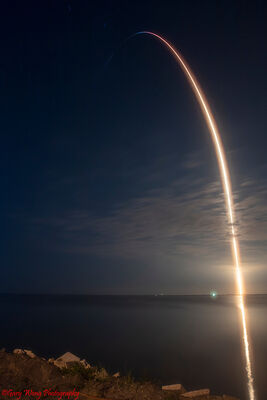Night photography?????
Aug 29, 2011 11:50:11 #
I read an article today about night photography and the author shared some magnificent night shots. For each shot he gave the f stop & speed. [ f 22 @ 30 sec, f 16 @ 25 sec, f 8@ 15 sec, etc. My question is, how did hr arrive at these settings ? Did he;
- Gain experience through trial & error
- Use some kind of rule of thumb, if so what ?
- or does your in camera light meter give you the settings
- or something else i.e.; how do you do it?
- Gain experience through trial & error
- Use some kind of rule of thumb, if so what ?
- or does your in camera light meter give you the settings
- or something else i.e.; how do you do it?
Aug 29, 2011 12:23:44 #
photocat
Loc: Atlanta, Ga
probably a combination of using the light meter and experience with testing.
I use only manual metering mode and meter for the "normal" exposure, take a shot and then check the histogram to determine if an adjustment needs to be made.
It takes practice.
I use only manual metering mode and meter for the "normal" exposure, take a shot and then check the histogram to determine if an adjustment needs to be made.
It takes practice.
Aug 29, 2011 12:25:25 #
Aug 30, 2011 06:39:30 #
My guess is that he got the settings from each of the images. Depending on which software you download and manage your images with, photo attributes for each are stored.
I use free software called FastStone, download at www.faststone.org. It is not Photo Shot, but it will allow you to edit your images as well and has a very well written manual you can download as a PDF.
I am attaching a screen shot with the file attributes of a Burrowing Owl I took. I hope this helps.
I use free software called FastStone, download at www.faststone.org. It is not Photo Shot, but it will allow you to edit your images as well and has a very well written manual you can download as a PDF.
I am attaching a screen shot with the file attributes of a Burrowing Owl I took. I hope this helps.
Burrowing Owl - Florida
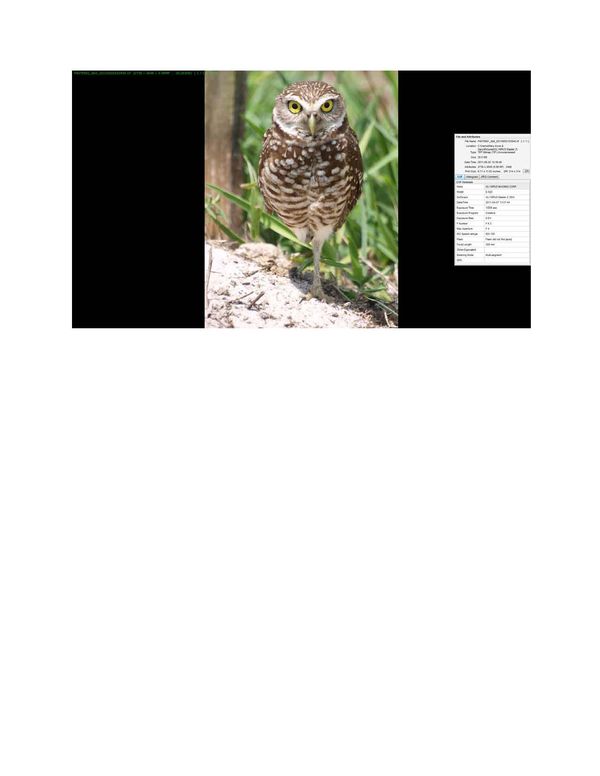
Aug 30, 2011 10:40:53 #
It depends. It is utter simplicity to do this with a digital camera. However, the exposure times and apertures mentioned might suggest the author/photographer used a view camera.
In that event, an incident meter, combined with a spot meter, could quickly paint the exposure picture.
When using a spot meter, remember it is assuming the exposure at 18% grey. You have to place the exposure based on the reading for lighter or darker image presentation as shot.
If any of this seems confusing, check out any info you can find on the Zone System. It might help steer you in the right direction.
Put another way, when you understand exposure, you can know what the shot will look like before you shoot. It is not a guessing game. There is no going back, for example, to a movie set once it has been struck. Every frame must be good, which in the days of film, required craft. Digital allows the use of a waveform/vectorscope, or even histogram, to confirm all is well before yelling "action."
When doing second plus exposures, make sure you have a sturdy tripod. A quality tripod is a lifetime investment. That's why good ones have relatively high prices. Heavy (15+ pounds) is good, but if that seems impossible to backpack, get a sherpa, or a really good carbon fiber at about half the weight and twice the price. Dilettante tripods are better used as racing pylons or three point paper weights.
My Gitzo Tele Studex Giant has about a 12 foot max height, upon which I have placed movie cameras worth hundreds of thousands of dollars with no worries. I also run a custom jib on the Gitzo, 100+ pounds. No worries either. It does not have "coffee nerves," which means, tap it and it resonates visibly, for a while. Good tripods dispense with coffee nerves. Many hobbyist tripods are full of them.
Again, get a good tripod and it will serve you well. My Gitzo is going strong now for 30 years and has been schlepped all over the planet whilst being abused by many. I have had fluid heads shatter due to the airport "security" measures. When traveling, pack your head separately and safely.
In that event, an incident meter, combined with a spot meter, could quickly paint the exposure picture.
When using a spot meter, remember it is assuming the exposure at 18% grey. You have to place the exposure based on the reading for lighter or darker image presentation as shot.
If any of this seems confusing, check out any info you can find on the Zone System. It might help steer you in the right direction.
Put another way, when you understand exposure, you can know what the shot will look like before you shoot. It is not a guessing game. There is no going back, for example, to a movie set once it has been struck. Every frame must be good, which in the days of film, required craft. Digital allows the use of a waveform/vectorscope, or even histogram, to confirm all is well before yelling "action."
When doing second plus exposures, make sure you have a sturdy tripod. A quality tripod is a lifetime investment. That's why good ones have relatively high prices. Heavy (15+ pounds) is good, but if that seems impossible to backpack, get a sherpa, or a really good carbon fiber at about half the weight and twice the price. Dilettante tripods are better used as racing pylons or three point paper weights.
My Gitzo Tele Studex Giant has about a 12 foot max height, upon which I have placed movie cameras worth hundreds of thousands of dollars with no worries. I also run a custom jib on the Gitzo, 100+ pounds. No worries either. It does not have "coffee nerves," which means, tap it and it resonates visibly, for a while. Good tripods dispense with coffee nerves. Many hobbyist tripods are full of them.
Again, get a good tripod and it will serve you well. My Gitzo is going strong now for 30 years and has been schlepped all over the planet whilst being abused by many. I have had fluid heads shatter due to the airport "security" measures. When traveling, pack your head separately and safely.
Aug 30, 2011 12:28:13 #
I take lightening pictures and I have tried various settings. I usually use a medium f stop about 11-14, and a very slow shutter speed 15-30 or bulb. You will need a tripod and a remote shutter release since and camera shake will be picked up by the slow shutter speed. Also Iso is important, I like 100 for night photos but I used 6400 the other night and the pics were awesome. With most new digital cameras you have a history of what you shot and at what settings. Just check out your photos and check the settings to determine what you like.
Aug 30, 2011 17:09:24 #
When I take night shots for example at the moon I use a tripod and remote release and set the f stop at 8 and asa200 and speed at 125/sec. The moon is the bright thing in the sky at night.
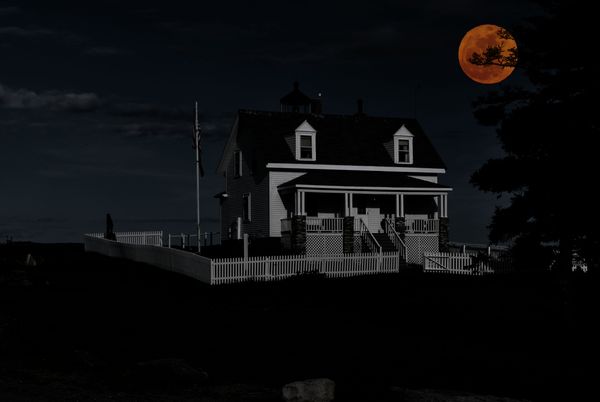
Aug 30, 2011 17:41:27 #
Aug 31, 2011 04:36:30 #
Aug 31, 2011 07:02:20 #
jdtx
Loc: SA, Tx.
good advice above..tripod and shutter release I think are "have to haves" for night shooting..then it is just experimentation with the settings to get what you want from a specific scene..unless of course you are photoarts and know all that just by lookin' at the scene..also learn to read your histogram and look at the pic you took in your viewfinder and adjust accordingly..good luck
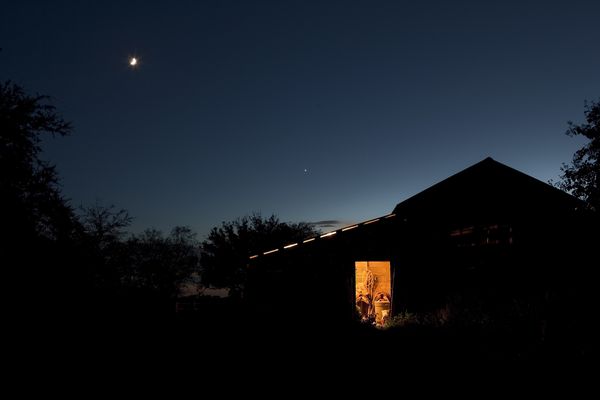
Aug 31, 2011 18:11:03 #
We havent done much in the way of night snapping but the sky is the limit at night. We made an evening excursion down to the San Antonio River Walk once and had a great time. Food, Drink, Music, and Neon illuminations, w/cameras on the river
awesome. Mucho Fun!
Here are a few that we took.
Keep on snap'n
Here are a few that we took.
Keep on snap'n
Texas Flavors and Colors
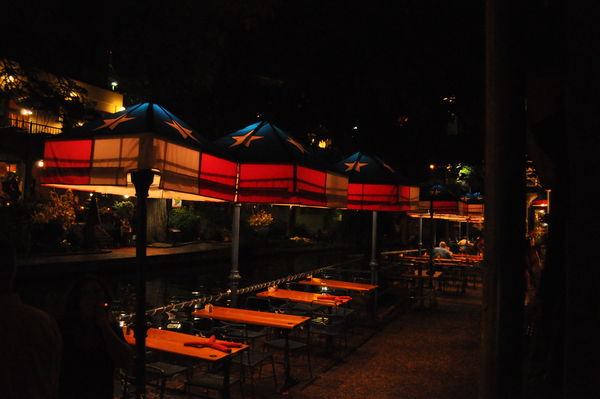
Music
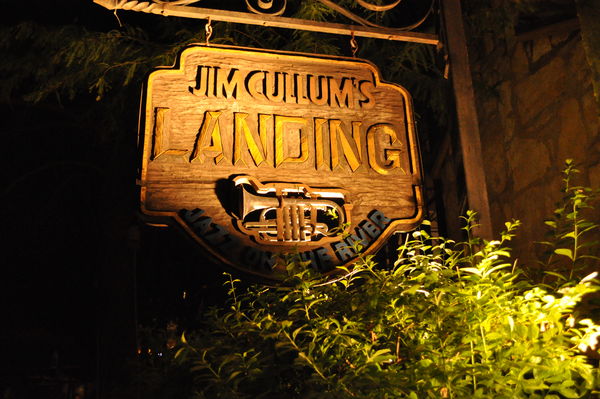
Rooms
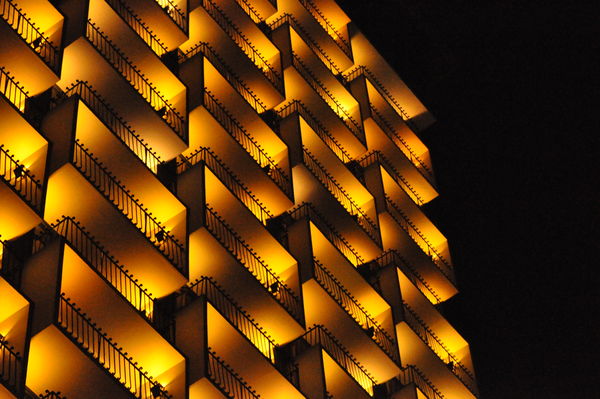
Post Card?
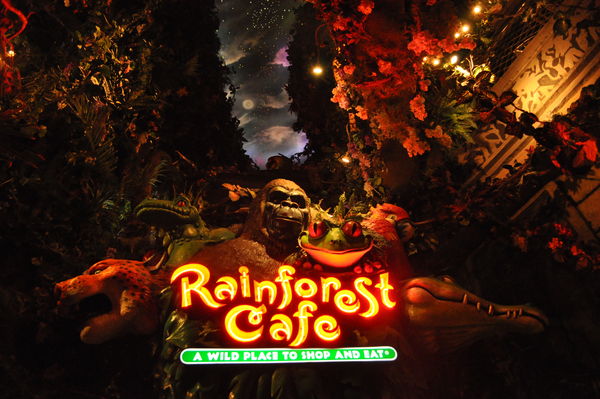
A Night around the Bonfire
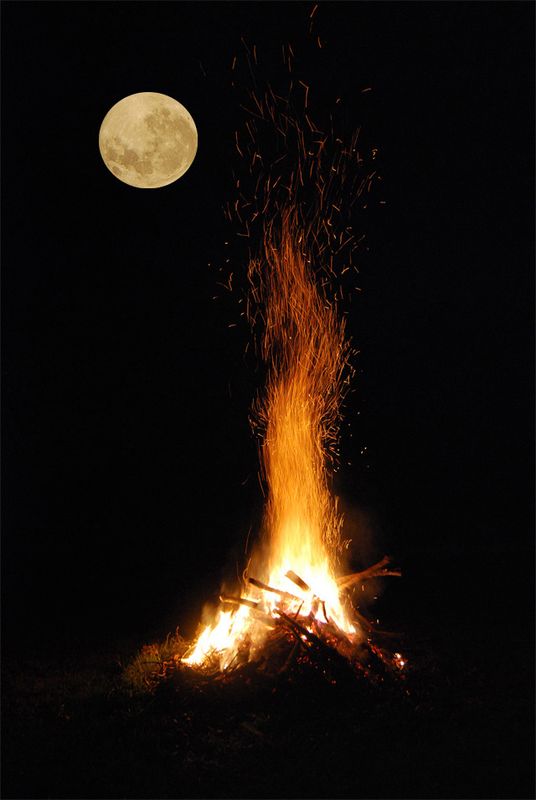
Sep 2, 2011 13:35:43 #
Sep 2, 2011 16:52:02 #
barbara wrote:
Wonderful shots. How did you do the bonfire, what settings
Sorry about not including any picture info.
The bonfire was shot w/Nikon D-40x, 18-55mm, F-3.5, 1/5 s, iso 1600. The moon was shot through a telescope by simply holding the D-40 up to the eyepiece. Combined in PS Elements.
The three Riverwalk shots are all D-90, 18-55mm, 1/60 s, iso 3200, the F stops, top to bottom, are F4, F3.5, F4.5, and F 5
Thanks for the comments.
Sep 2, 2011 18:38:47 #
If you want to reply, then register here. Registration is free and your account is created instantly, so you can post right away.

